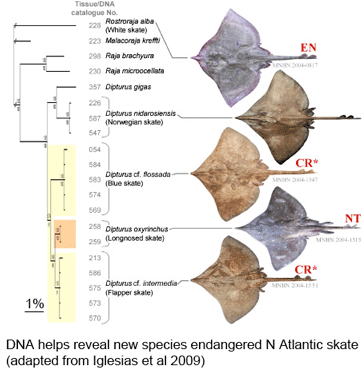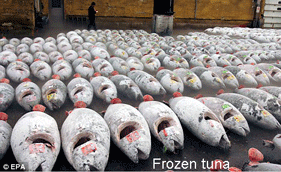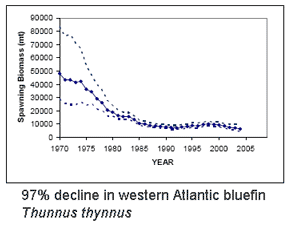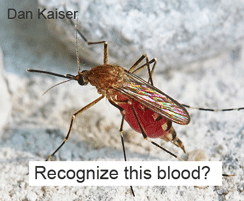The loss of Air France Flight 447 on 1 June 2009 near the mid-Atlantic Ridge killed all 228 passengers and crew.  The flight recorders have not been located, and the cause remains unexplained.  An interim update on the investigation is scheduled for release on 17 December.  Meanwhile, on 29 November a flight from Rio de Janeiro to Paris encountered severe turbulence in the same location before descending into calmer weather and safely completing its trip. The continuing mysteries prompt Cesare Marchetti and Jesse Ausubel to post some notes about a possible role for outgassing methane in the AF 447 crash which they accreted over the months after the tragic crash.
Blog
3rd International Barcode of Life Conference
Mark Stoeckle and Jesse Ausubel attended the 3rd International Barcode of Life Conference [https://www.dnabarcodes2009.org/] 7-13 November in Mexico City and were astonished and thrilled by the progress of the field since the March 2003 Banbury conference on DNA taxonomy that we catalyzed.  The conference press release summarizes vividly the progress, as does an article in the London Daily Telegraph. Mark presented our new work with Larry Sirovich and Ken Zhang on application of indicator vectors to barcode data sets.
The Big Picture
The quarterly magazine of Woods Hole’s Marine Biologicial Laboratory, Catalyst (Vol. 4, No. 2,Fall 2009), publishes an interview with Jesse, “The Big Picture†about the Encyclopedia of Life.
DNA to help skates
In current Aquatic Conserv Marine Freshwater Ecosys, researchers from Muséum national d’Histoire naturelle, France, report on 80 years of taxonomic confusion that has contributed to near extinction for a once abundant north Atlantic skate. Iglésias and colleagues found that two forms, lumped together in 1926 as European common skate (Dipturus batis, Linnaeus 1798), in fact represent distinct species with morphologic, genetic (in mitochondrial genome), and life history differences.
 As the researchers report, this taxonomic oversight obscured the disappearance of one species, the flapper skate (D. cf. intermedia) because it was confused with the less threatened blue skate (D. cf. flossada). Iglesias and colleagues marketplace survey revealed additional sources of confusion. They analyzed 4,110 skates landed over a 2 year period from 103 fishing cruises in four main French ports by 41 different French commercial trawlers, and found that five skate species (included the two named above) from two genera are variously lumped together under just two marketplace names, the aforementioned “European common skate (D. batis)” and “longnose skate (D. oxyrinchus);” according to their analysis the latter species, formerly common, is also locally extirpated, and most specimens with this name represent other species.
As the researchers report, this taxonomic oversight obscured the disappearance of one species, the flapper skate (D. cf. intermedia) because it was confused with the less threatened blue skate (D. cf. flossada). Iglesias and colleagues marketplace survey revealed additional sources of confusion. They analyzed 4,110 skates landed over a 2 year period from 103 fishing cruises in four main French ports by 41 different French commercial trawlers, and found that five skate species (included the two named above) from two genera are variously lumped together under just two marketplace names, the aforementioned “European common skate (D. batis)” and “longnose skate (D. oxyrinchus);” according to their analysis the latter species, formerly common, is also locally extirpated, and most specimens with this name represent other species.
For newly rediscovered blue and flapper skates, the researchers report 20 diagnostic substitutions in approximately 2600-nucleotide segment spanning 12s and 16s RNA. Other than the 10 mitochondrial sequences included in this report, I find only two other D. batis sequences in GenBank (and none as yet under either of two resurrected names). It is remarkable that so little genetic information has been collected for such recently abundant, commercially important (annual landings in 1000’s of tons), and now threatened species. To aid standardized application of molecular identification techniques, I hope the authors will also analyze COI barcode sequences for their specimens. Then I look forward to school children aiding conservation and helping find new species by DNA barcoding specimens from their local fish markets!
Census of Marine Life in the news
The deep sea projects of the Census of Marine Life make news with their discoveries, as for example covered by AP’s Cain Burdeau in a 22 November 2009 story “Thousands of strange creatures found deep in ocean.†Meanwhile, the weekly Economist magazine features the Census on the cover of its “The World in 2010†issue and in an excellent article by Alun Anderson, “Introducing the transparent ocean.â€
“Son et lumiere” – Exciting Updates
A slightly revised version of Jesse’s May 2009 Dalhousie University Commencement Address, Son et lumiere, is published on 23 November 2009 by the monthly science magazine, SEED, as Broadening the Scope of Global Change to Include Illumination and Noise.
The essay’s recommendation for consideration of an International Quiet Ocean Experiment earns coverage by Mike Seccombe in the Martha’s Vineyard Gazette in a 27 November 2009 article, Quiet please, across the seas: Pause ships to hear the fish.
EPRI and the Lamellibrancid Worm
What does electric power have to do with sea worms? Learn in Jesse’s talk “EPRI and the Lamellibrancid Worm” which spans zero emission power plants and deep carbon.
The (New) Web of Life by Alan Burdick
On Earth, the quarterly magazine of the NRDC, published a detailed article, The (New) Web of Life , by Alan Burdick about the history and progress of the Encyclopedia of Life.
Identifying ocean’s racehorses with DNA
 Bluefin tuna are enormous (up to 15 ft/4.5 m, 680 kg/1500 lbs), high-speed (up to 54 km/h, as fast as racehorses) creatures that roam across oceans and return to ancestral waters to spawn. High demand has fueled intensive fishing by international fleets, resulting in 90% population declines heading towards extinction for all three species, Southern (Thunnus maccoyii), Northern (T. thynnus), and Pacific bluefin (T. orientalis). This week in PLoS ONE researchers from the American Museum of Natural History describe DNA-based identification of bluefin and other tuna species using character analysis of COI barcode sequences. Lowenstein and colleagues’ report provides a basis for routine identification of marketplace items to inform consumers and enable enforcement of regulations, including a proposed listing as endangered under Convention of International Trade in Endangered Species (CITES).
Bluefin tuna are enormous (up to 15 ft/4.5 m, 680 kg/1500 lbs), high-speed (up to 54 km/h, as fast as racehorses) creatures that roam across oceans and return to ancestral waters to spawn. High demand has fueled intensive fishing by international fleets, resulting in 90% population declines heading towards extinction for all three species, Southern (Thunnus maccoyii), Northern (T. thynnus), and Pacific bluefin (T. orientalis). This week in PLoS ONE researchers from the American Museum of Natural History describe DNA-based identification of bluefin and other tuna species using character analysis of COI barcode sequences. Lowenstein and colleagues’ report provides a basis for routine identification of marketplace items to inform consumers and enable enforcement of regulations, including a proposed listing as endangered under Convention of International Trade in Endangered Species (CITES).
 The eight species in genus Thunnus are not discriminated by regularly used nuclear loci and differ by about 1% or less in mitochondrial coding regions (e.g., Ward et al 2005 Phil Trans R Soc B), challenging DNA-based identification. To construct a diagnostic key, Lowenstein and colleagues analyzed 89 COI sequences in GenBank representing the eight tuna species and by visual inspection found 14 sites that provided 17 “compound characteristic attributes (CAs)” (terminology from Sarkar et al 2008 Mol Ecol Res). Turning marketplace detectives, the AMNH team collected 68 sushi samples from 31 establishments in New York and Denver over 6 month period in 2008. Nearly one-third (22; 32%) of samples were sold as species contradicted by the molecular data, including items from over half (19; 61%) of the restaurants.
The eight species in genus Thunnus are not discriminated by regularly used nuclear loci and differ by about 1% or less in mitochondrial coding regions (e.g., Ward et al 2005 Phil Trans R Soc B), challenging DNA-based identification. To construct a diagnostic key, Lowenstein and colleagues analyzed 89 COI sequences in GenBank representing the eight tuna species and by visual inspection found 14 sites that provided 17 “compound characteristic attributes (CAs)” (terminology from Sarkar et al 2008 Mol Ecol Res). Turning marketplace detectives, the AMNH team collected 68 sushi samples from 31 establishments in New York and Denver over 6 month period in 2008. Nearly one-third (22; 32%) of samples were sold as species contradicted by the molecular data, including items from over half (19; 61%) of the restaurants.
Lowenstein found their character-based identifications were more accurate and precise than those provided by BOLD ID engine (www.barcodinglife.org), largely reflecting that the ID engine uses a 2% cutoff for assigning specimens to species, which encompasses all eight Thunnus sp. In addition, BOLD is a workbench for researchers and so contains many as yet unpublished sequences from ongoing studies; these need to be viewed as provisional data. Indeed, in constructing their key Lowenstein and colleagues set aside 2 of the 89 GenBank tuna sequences as these grouped with other species. These anomalous sequences might reflect hybridization or introgression which is reported to occur in 2-3% of Atlantic bluefin, for example (Viñas and Tudela 2009 PLoS ONE). In this study, researchers from Universitat de Girona, Spain and World Wildlife Fund describe a DNA-based method for distinguishing tuna species using mitochondrial control region and nuclear ITS. Here again the method is validated using published data, in this case 42 GenBank records representing the 8 species. As an aside, I find it remarkable there are so few records that might enable identification of such commercially-important and now endangered species. These two studies establish a scientific and possible legal standard for tuna identification. Now we begin.
Tracking disease vectors with DNA
 What hosts sustain arthropod disease vectors when they are not biting humans? In September 2009 PLoS ONE, researchers from Doñana Research Station, Seville, Spain, report on a “universal DNA barcoding method to identify vertebrate hosts from arthropod bloodmeals.” The investigators collected “wildlife engorged mosquitoes, culicoids [biting midges] and sand flies (Phlebotomiae)…using CDC traps supplied with dry ice to attract ectoparasites through light and CO2.”
What hosts sustain arthropod disease vectors when they are not biting humans? In September 2009 PLoS ONE, researchers from Doñana Research Station, Seville, Spain, report on a “universal DNA barcoding method to identify vertebrate hosts from arthropod bloodmeals.” The investigators collected “wildlife engorged mosquitoes, culicoids [biting midges] and sand flies (Phlebotomiae)…using CDC traps supplied with dry ice to attract ectoparasites through light and CO2.”
To design vertebrate-specific primers that would not amplify the more abundant arthropod DNA, Alcaide and colleagues “downloaded all vertebrate COI sequences (N = 18,2980 from the Classes Mammalia, Aves, Amphibia, and Reptilia that were available in the public domain managed by BOLD Systems database in January 2009” and compared these to “6,784 arthropod COI sequences from taxonomic groups that included blood-feeding species.” From this comparison they designed degenerate (multiple nucleotides at some positions) primers that were >99% matched to vertebrate target sequences and >99% mismatched to invertebrate targets. It would be helpful in this and other studies if the description of new primer(s) gave the position of the 3′ end of each primer as compared to mouse mitochondrial COI for instance. This would make it clear which portion of the COI barcode region is being amplified.
The first pass test with these primers gave PCR products in 43 of 100 mosquito bloodmeals, and reamplification with a slightly different primer set yielded sequenceable products in 97 of 100 cases; this re-amplification protocol was applied to the other vector species with “satisfactory” results. All except 5 matched at >99% level to vertebrate sequences from museum voucher specimens. For 3 of the uncertain identity sequences, they used the closest BOLD matches and knowledge of local fauna to “deduce that these species could be the Iberian hare Lepus granatensis, the red-legged partridge Alectoris rufa and the Egyptian mongoose Herpestes ichneumon.” The other two without close matches were from ticks collected while still feeding so the hosts were known. By my count they detected 18 mammalian and 26 avian host species in arthropod bloodmeals; to me this is remarkable variety given the relatively small number of bloodmeals tested. I look forward to learning more through DNA tracking of biting arthropods.